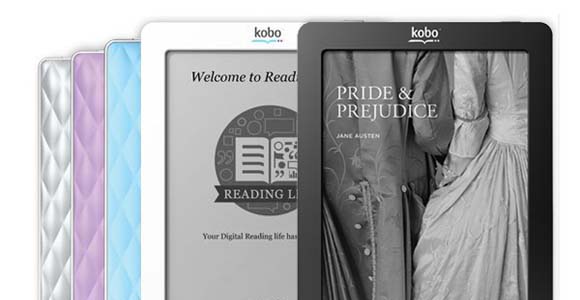With books so hard to come by in Papua New Guinea and the Pacific, more and more people across the region are getting into ebooks: digital versions of the printed book.
 There are now millions of ebooks available. Comparatively cheap, easy to find and fast to download from the web (if you have a reliable connection), these digital editions offer you the chance to read almost any book no matter where you are at a moment’s notice. Here’s our quick guide to digital reading.
There are now millions of ebooks available. Comparatively cheap, easy to find and fast to download from the web (if you have a reliable connection), these digital editions offer you the chance to read almost any book no matter where you are at a moment’s notice. Here’s our quick guide to digital reading.
1. How do I read an ebook?
You don’t need a specialised e-reader device to read ebooks, although many people do. You can read them on any PC using free software like Adobe Digital Editions. You can also read ebooks in a web browser using services like Google Play and Kindle cloudreader (but that requires you to be online—not always possible in PNG or the Pacific.)
However, e-readers (eg Amazon’s Kindle, Sony’s Reader or Kobo’s eReader) have many advantages—they are highly portable, can be used offline, have a long battery life and possess non-reflective, high resolution screens specifically designed for reading text. That means you can pop them in a pocket or backpack and take them to remote locations without the endless need to recharge batteries. You’re also unlikely to run out of reading material—a basic e-reader can easily hold 1500 or more ebooks!
Then there’s Apple’s iPad. Its full colour high resolution display means you can now enjoy colour illustrated ebooks too, although its reflective screen is not great for long-form reading and its 8-hour battery life is much shorter than that of a typical e-reader. The e-reader makers have launched rival colour e-readers (eg the Kindle Fire and Kobo Arc) to compete with the iPad and there are a number of rival tablets on the market too (eg Samsung’s Galaxy Tab, which BSP uses to open bank accounts in PNG’s rural areas).
2. How do I buy an ebook?
Major vendors like Amazon, Apple, Kobo and Sony all have online ebook stores that you can access via the web directly from your e-reader device. Once you’ve set up an account and provided a credit card, browsing and buying is simple, seemless and quick (a basic text-only ebook make take a minute or two to download in PNG from a reliable wireless connection). However, you don’t have to be locked into a single vendor if you don’t want to. Most ebooks (except Amazon’s) are in a standard format called EPUB, which can be read on most devices, so you could choose to buy your ebooks from your favourite bookshops’s website or from Google, which has its own ebooks business online. If you have an iPad or other tablet, many ebook vendors have their own app through which you can access the books you have purchased from them (eg you can read your Kindle books on an iPad using the Kindle app).
Whatever the future, it’s clear than the heyday of the printed book is now in the past.
3. How is an ebook different from a print book?
Apart of the obvious differences between a digital product and physical one, there are some other key differences which are less apparent.
Ebooks are generally much cheaper than printed books. However, unlike a printed book they are governed by licences that often prevent you from copying or lending them. In some cases, if the licence is revoked or altered unilaterally by the retailer, you could even discover the ebook has disappeared from your device altogether (ironically, Amazon once deleted Orwells’ Nineteen Eighty-Four from some users’ Kindles).
You lose other things when you buy a digital edition: because the text size can be changed, there are often no page numbers and if you do run out of batteries or your plane is ascending or descending, then the reading has to stop. Basic e-readers can’t accommodate much typography or design, so you tend to get a ‘vanilla’ version of the original. Lastly, there are no bookshelves to browse at your friend’s house if they are an ‘ebooks only’ person.
4. Will ebooks kill real books?
In some instances, yes. In genres that particularly suit the voracious reader (eg crime, fantasy and romance), ebooks versions are already outselling the printed editions. There must come a time when some types of book are no longer viable as printed books and they may be published as ‘ebook only’ in future, reducing what normal bookshops can offer. On the other hand, it is hard to see some kinds of books—children’s picture books, for instance— being as good on a device as they are in print.
5. What’s the future for ebooks?
We’re still at the beginning of the ebook revolution and, as long as the major technology companies are involved, you can expect the devices and the ebooks themselves to develop rapidly.
The latest ebook standard (‘EPUB 3’) allows for interactive ebooks with video, animation and audio recording capabilities (imagine a grandparent reading aloud a kids’ picture book for the child to listen to later). You can even create your own fully-featured colour ebooks using free software such as Apple’s iBooks Author. Devices are also getting ever smarter and more flexible, although this does present a challenge for book publishers and authors—surveys suggest that tablet owners would rather play games or visit Facebook than read ebooks.
Whatever the future, it’s clear than the heyday of the printed book is now in the past.








 USD 0.2464
USD 0.2464 AUD 0.3918
AUD 0.3918 GBP 0.1904
GBP 0.1904 EUR 0.2284
EUR 0.2284 NZD 0.431
NZD 0.431 JPY 37.15
JPY 37.15 SGD 0.3304
SGD 0.3304
Leave a Reply